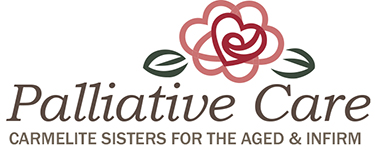Recently, Stacey Sumereau of the Avila Institute of Gerontology interviewed Sr. Maureen McDonough, Administrator, and Geri Gracey, Clinical Instructor, at St. Patrick’s Manor in Framingham, Massachusetts. St. Patrick’s Manor is one of the six pilot homes where the Carmelite Palliative Care Program was pioneered starting in 2012. You can see stories of the staff, residents and families whose lives have been changed by the Palliative Care Program at St. Patrick’s Manor. Stacey wanted to better understand the process and the challenges that the St. Patrick’s Manor team needed to overcome in order to establish a strong palliative care program.
Q: Can you give me a quick summary of how the care has changed since the palliative care program was first implemented?
Geri: Staff know the residents better. I hear that, especially from the nursing assistants. The residents have a better connection with the care team. During palliative care meetings we review the resident life history, preferences and domains of pain so that the care team can get to know the resident better and provide compassionate and holistic care. The care team is much more aware of the resident’s’ preferences, they are able to recognize and understand the resident’s wants and needs.
Q: What effect have you seen on the residents with the Palliative Care Program?
Sr. Maureen: We have seen a varying effect based on the resident’s individual situation but overall we have seen many improvements in the residents from our palliative program. Many residents have benefited from the socialization and the security of their new surroundings. Residents enjoy attending activities and socialization in the Main Dining Room. The outcome has been beneficial for the resident as well as the team.
Q: I imagine it must have been a lot of work to implement the Program- for example using the profile assessments, and a whole new structure for the staff. How much work did it actually take?
Geri: It was a lot of work. We’ve been at it now for four years, and what people have to understand is not to try to go too fast. You have to really think about what you’re doing, set up programs, focus on education, and make sure that everyone is really on board with what it is. We have to be patient and stay focused on the goals of the program. We have to continue to work together as a team and help the team understand the benefits of providing person-centered and palliative care for our residents.
Sr. Maureen: It’s important that your steering committee works together. We meet weekly as a team to go over the ways that we can improve our program and processes. We find that we need to have ongoing education and communication with our medical staff, care teams, residents and families about the program.
Geri: Yes, each of us on the steering committee attends the palliative care meeting on each unit. You really have to keep on top of it to keep the team focused and committed on the resident and any issues that may arise.
Q: How do you overcome the lack of knowledge of palliative care with the families of the residents? I know palliative care is often confused with hospice care.
Geri: I’m really impressed with the way the Admissions, Social Services and the Nursing departments introduce it to the family members. It’s very nicely done. They get the brochure as soon as they come into the home.
Sr. Maureen: The brochure explains our philosophy, and then we talk to them and answer any questions they may have. Most residents come to us on medications so we try to explain that the reasons that they are on the medication is to treat their medical condition which is a palliative measure. A lot of people are on palliative care but don’t realize it. They get that explanation right up front, and then people are talking about it right at admission and it continues throughout their stay.
Q: Were there challenges getting the staff to adopt this new way of thinking?
Geri and Sr. Maureen: The Carmelite Sisters’ philosophy has always taught us the concept of palliative care. The challenge of formalizing the program has been the education needed and getting staff to understand the importance of documentation. We needed to change their routine and mindset. Now that the program has been implemented the care team has been able to see the benefits, rewards and how this program supports our mission.
